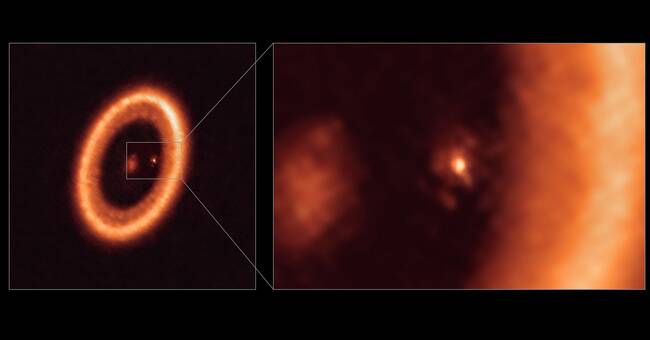Nearly 400 light-years away, the planets PDS 70B and PDS 70C orbit a sun - and around C there is a disk of dust and dust, with enough mass for three moons the size of our moon to be forming there.
Researchers have now been able to establish this, with the help of the Alma radio telescope in the Atacama Desert in Chile.
"Our work involves a clear discovery of a disk where satellites can be formed," said Myriam Benisty of the University of Grenoble-Alpes, France, and the Chilean Universidad de Chile, in a press release from the European Southern Observatory (ESO).
Just the baby
What is special about the distant solar system is that it is so young.
The star the planets orbit around - PDS - is estimated to be almost newborn, a paltry six million years old, compared to our solar system which is 4.6 billion years old.
We have all these beautiful theories (about how planets and moons are formed), but as long as you can not test them, they can be completely wrong, Benistry tells The New York Times.
Scientists believe that planets are formed from clouds of dust and gas around stars.
Around the PDS there is such a circular disk that orbits the star like a ring.
When planets then form, they can in turn absorb material from the larger disk, and have their own small disks.
In addition to contributing to its own growth, the disks around the planets can also form their own celestial bodies - moons - which is what seems to happen in this system.
Huge disk
The planets in question were discovered in 2018 and 2019, respectively, by the giant telescope VLT, and the new discoveries provide new insights into the solar system.
The disk around the PDS 70C is huge, as large in diameter as the distance between the earth and the sun, and 500 times larger than Saturn's rings.
There also does not appear to be a similar disk around planet B, indicating that C is starving its neighbor of dust.
The researchers hope to soon gain even more knowledge about the secrets of the PDS system.
In the Atacama Desert, the extremely large telescope ELT is being built, which when completed will be aimed at the young solar system and provide clearer images of what is going on there.
The study is published in the scientific journal The Astrophysical Journal Letters.

